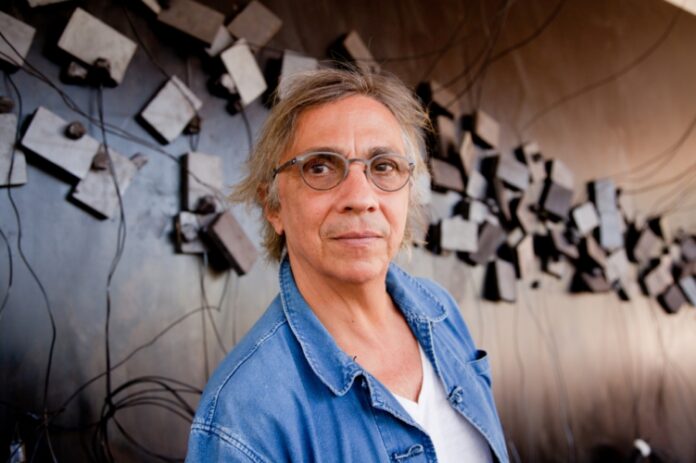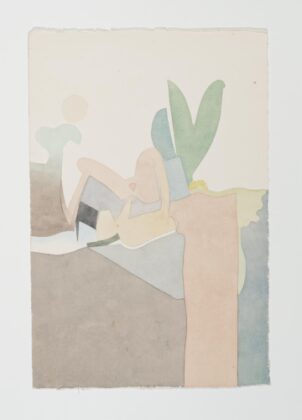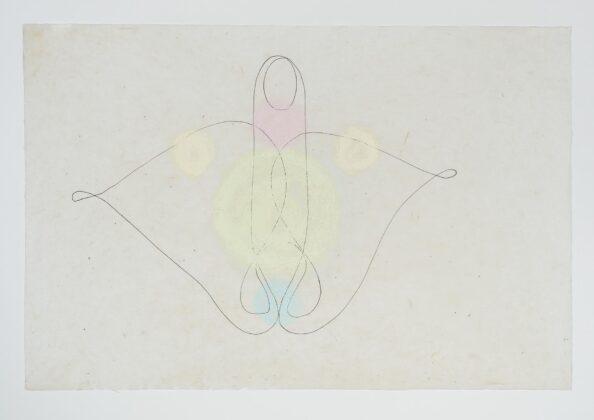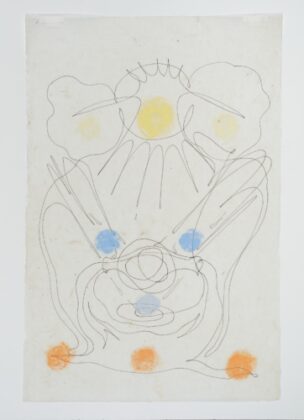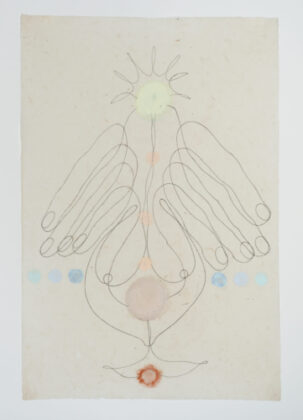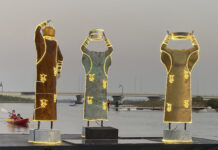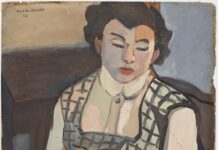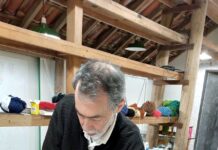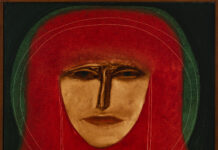Starting this Saturday (13/1), New York will host the first exhibition of works by Tunga in the United States since his death in 2016. Venus curated by Paulo Venancio Filho, who between the end of 2021 and the first half of last year was in charge of a large Retrospective of the artist, held at Itaú Cultural and at Instituto Tomie Ohtake, in partnership with Tunga Institute. The show on North American soil takes place at Luhring Augustine, a gallery that has represented Brazilians since 1998, and brings together more than 60 works, many of them unpublished. The last Tunga exhibition held there took place in 2014.
According to Clara Gerchman, co-founder and manager of the Tunga Institute collection, created in 2017, and whose director is Antonio Mourão, the artist's only son, this is a great opportunity to be able to present Tunga's two-dimensional works, according to her a stage very important in the trajectory of the Brazilian, but little seen.
“The show occasionally features sculptural works, but the bulk of it is made up of two-dimensional works. As we are working with the collection, which is the primary source, we have discovered countless phases of a very diverse set. Our mission has been precisely this: to work with unpublished material for the public”, explains Clara to arte!brasileiros, adding that later this year the raisonné catalog will be launched with the two-dimensional works of Tunga, a project started in 2021.
Venancio Filho points out that the Tunga Institute insisted on taking the sculpture to New York Venus (1976), which lends its name to the exhibition, and had been seen a few times, one of them in the North American city itself; another in São Paulo. “It is a very important work in his work, and I built a whole situation around this work, with drawings from the same period, mixing recent creations with older ones”, he explains. Some of the drawings present at Luhring Augustine, for example, had originally been shown in Tunga's first solo exhibition, held in 1974, at the Museum of Modern Art in Rio de Janeiro (MAM Rio).
The curator also explains that, when he was invited to conceive the show last year, he thought of creating what would be “a Tunga museum room”, where the spectator could understand the fundamental aspects of his work, issues such as the body, sexuality and fetishes. “It is an exhibition that also brings the multiplicity of materials through which Tunga expressed his erotic imagination, a major driver of his creative process”, says Venancio Filho, who met the artist when he was just 19 years old.
As in the 2021-2022 retrospective, Venancio Filho was not concerned with establishing a hierarchy or a chronology between the works presented. “This goes against the spirit of Tunga's work, which is something like the Möbius strip [an infinity symbol, created in 1858 by the German mathematician and astronomer August Ferdinand Möbius], which goes back and forth, elements that appear and reappear throughout of its trajectory”.
On display are Tunga’s first abstract drawings – “more gestural, less figurative”, emphasizes the curator –, to the artist’s most emblematic works, such as the Exogenous Axes, female profiles cut from wooden trunks, until her last series of drawings, From La Voie Humide and the sculptures from the series Morphological, both from 2014. Among the surprises promised by the curator are three drawings inspired by the work of Tarsila do Amaral, “very rarely seen”, “very rare things”, created at the turn of the 1970s to the 1980s.
the sculpture Venus, which names the show, was Tunga's first large-scale work, recalls the curator. Composed of rubber, lamp, electrical material, metal and plastic fly, it measures 183 x 250 x 93 cm. “It has this title that reveals much of his erotic thinking, in an artifice with the name in which he separates 'see' from 'nude' with a hyphen. And, for me, when we talked about this work, I saw a certain relationship with the big glass [1915-1923], by Marcel Duchamp, in the separation between the bride and her suitors, which Tunga reconfigures. Because Tunga is from a period when Duchamp started to influence Brazilian art. However, the majority were influenced by the conceptual path, by readymades, as is the case with Cildo Meireles. While Tunga was touched by the surrealist side and the eroticism of Duchamp”, he explains.
Venancio Filho hopes that the exhibition, after an absence of eight years of Tunga's works from the North American scene, and almost four, from the international scene – in 2019, the Franco Noero gallery, from Italy, held an individual with his works – will replace the Brazilian within the importance it has for contemporary art. And that the works presented there may be of interest to large institutions in the United States or Europe. It is worth remembering that Tunga is already present in foreign institutions such as the Guggenheim, the Art Institute of Chicago, the Reina Sofía, the Tate and the Pérez Art Museum Miami, among others.
For Roland Augustine, founding partner of the gallery alongside Lawrence Luhring, Venus marks a resumption and also a restart of the artist's representation by the gallery.
“We had five solo exhibitions by Tunga over the last 25 years. But we included his works in many collective shows during that time. The last one, from 2014, was a continuation of the work he was focused on at the time, with the use of crystals, ceramics, etc. Now, our goal was to show aspects of his work that many don't know about, namely his drawings, alongside sculptures that are somehow related to them”, highlights Augustine, who also represents Lygia Clark in the USA.
The gallerist met Tunga on the recommendation of the French curator Marc Pottier, after the 22nd Bienal de São Paulo, in 1994, in which the artist had presented milk caddies, a gigantic set of cast iron pieces, in the shape of bells, bathed in a viscous and whitish matter. At the time, Augustine was helping the Halle family of collectors, from the USA, to assemble a collection of Latin American works, and the work was acquired. In 1997, it was loaned to the Bard College museum for an exhibition about the artist.
“That was a baptism of fire. Immerse yourself in Tunga's work. And, since my first experience and exposure to his work, his work has remained a mystery to me, because his works are not so accessible, due to their poetic nature”, says the gallerist. “When we started showing his creations in New York, we knew they were unique, esoteric and authentic. And they have not become less, but more complex over time. And there was never really a commercial market for them.”
According to Augustine, however, critical reception has always been positive in New York. Tunga was popular with curators, but not with collectors, which was a bit frustrating for the artist. In Brazil, Tunga's works still fetched good prices, he says, but not half of those figures were reached in the US. In the late 1990s, for example, the gallery sold just one work from the series Axes exogenous, for around US$ 35 at Fiac (Foire internationale d'art contemporain), in Paris, an amount that the gallerist does not consider equal to the artistic production of the Brazilian.
The gallerist compares Tunga to Bruce Nauman, in marketing terms. In the 1960s, he says, the only people who liked the American artist's creations were his craft colleagues. It was only between the end of the 1970s and the beginning of the following decade that Nauman's works began to be appreciated and acquired by museums. He imagines that, for Tunga, it will take another ten to 15 years for his work to be assimilated and understood to a greater degree.
“I've been hoping for many years that a museum in the US would embrace the idea of holding a Tunga retrospective. With this exhibition, we hope that the curator of one of these institutions will think, 'My God, now I understand why this man has to be shown in a meaningful way to the public,'” says Augustine.
A FIRST IMPRESSION
Since 2019 curator of Latin American art at the Museum of Modern Art in New York (MoMA), Beverly Adams has been following Tunga's career for over 25 years. In 1998, she had a solo exhibition by the artist at the Phoenix Art Museum, with drawings and sculpture. Milk Cadents (1994). Beverly has already been to the Luhring Augustine gallery and highlights the quality of the selection of works and the setting up of the new exhibition.
“It gives the viewer an insight into the arc of Tunga's career, many of his themes and concerns, but in a very subtle and intimate way, through the chosen drawings and sculptures. I learned a lot of new things”, says the curator. “It's great to have his work back in New York, at the gallery that has been an ardent supporter of Tunga over the years, and to allow more people to learn about this great artist and his poetic universe, which interweaves ideas and materials brilliantly in his unique approach to artistic making”.
Beverly also highlights the presence of two creations by the artist in the MoMA collection: To e cooking crystals. “There are two key installations by Tunga, one from 1981 and the other, made between 2006 and 2009. It's great to have works from two such different periods in his career. His creations enrich our growing collection of Brazilian art, which is in constant dialogue with other works in the collection”, he concludes.

